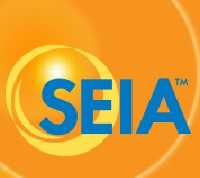Bureau of Land Management Approves First Projects within Nevada Solar Energy Zone
Solar Energy Program Zoned Development Takes Off at Dry Lake Site
WASHINGTON, D.C. – June 2, 2015 – (RealEstateRama) — As part of an effort to reduce the impacts associated with utility-scale solar development on public lands, the Bureau of Land Management (BLM) gave the green light to the first projects within a Solar Energy Zone – an area identified by the agency for solar development. The final environmental review documents were released today for projects at the Dry Lake Solar Energy Zone located in Clark County, outside of Las Vegas, Nevada. This is a significant step in the implementation of the BLM’s Solar Energy Program, which aims to reduce impacts on wildlife and habitat related to solar energy development.
Statement from Erin Lieberman, Western Policy Advisor for Renewable Energy & Wildlife, Defenders of Wildlife:
“Today the BLM took an important step in implementing the Solar Energy Program and demonstrated that zone-based development will work. This approach will help ensure that utility-scale solar energy development can be approved quickly while also minimizing impacts on wildlife and habitat. We support the BLM’s efforts and will continue to work with the agency and other stakeholders to fight the impacts of climate change on people, wildlife and habitats by continuing to find ways to plan for renewable energy development that is ‘smart from the start.’ By directing development to low-conflict lands and providing more efficient permitting, the BLM can successfully manage lands for both energy and wildlife.”
###
Background:
The release of the Decision Record and Finding of No New Significant Impact (FONSI) for projects within Dry Lake is the next step in a multifaceted program. Prior to the release of today’s documents, the final Dry Lake Solar Regional Mitigation Strategy was released, concluding a pilot process that involved various stakeholders and highlighted the opportunities and challenges associated with mitigating impacts of utility-scale solar development on wildlife, habitat and other resources and values on public lands. Throughout this process, members of the conservation community provided input and recommendations for innovative methods as well as improvements to the mitigation approach presented by BLM. Recommendations were focused on ensuring that Regional Mitigation Strategies are based on the best available science and utilize clear and appropriate methods to accurately assess and value the unavoidable impacts of utility-scale solar energy development. Equal importance was also placed on facilitating development in low-conflict Solar Energy Zones.
Conservation groups have long supported the idea of moving away from project-by-project impact reduction and toward a more comprehensive, landscape-scale approach that will help advance responsible renewable energy development and achieve greater conservation benefits for wildlife and other natural resources.
###
Defenders of Wildlife is dedicated to the protection of all native animals and plants in their natural communities. With more than 1.2 million members and activists, Defenders of Wildlife is a leading advocate for innovative solutions to safeguard our wildlife heritage for generations to come. For more information, visit www.defenders.org and follow us on Twitter @defendersnews.
Contact: Courtney Sexton, , 202-772-0253














